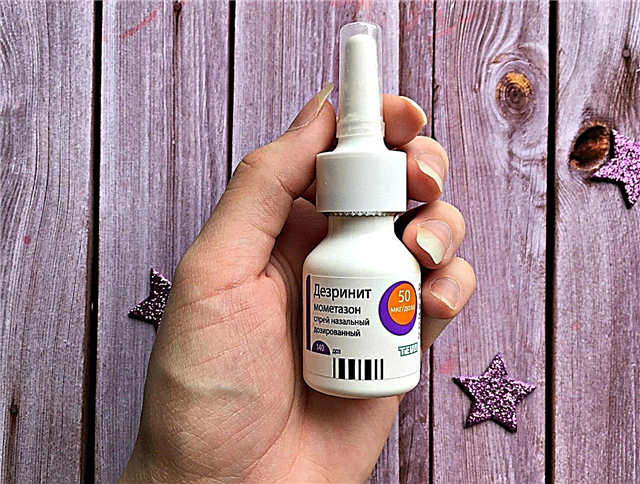Rice cereal porridge is introduced into the child's diet only after he gets acquainted with buckwheat. Rice porridge can be cooked both in water and in milk, every mother can handle this. Such a cereal dish is very useful for the child's body, and the baby will eat it with pleasure.

Baby feeding
The benefits of milk rice porridge
Rice grits contain a lot of starch, but, despite this, dishes made from it are easily digestible and well digested. Rice promotes effective cleansing and renewal of all body cells, helps to remove excess salts and toxic substances. Rice porridge stimulates mental activity, stabilizes the nervous state.
Note. Rice belongs to gluten-free cereals and does not irritate the children's intestines, it gently envelops the walls of the stomach, and does not require active enzyme work to digest it.
Therefore, in infants under one year old, when the digestive tract continues to develop and strengthen, rice porridge will be digested easily and gradually. As a result, the baby will not experience food allergies, stomach pain and upset stools, as these problems appear after eating heavy foods and gluten-free cereals.
In addition, the introduction of rice porridge in milk into the baby's diet will help:
- Increase the body's defenses;
- Improve the condition of children's skin with dermatitis and diaper rash;
- Normalize the functioning of the stomach, remove irritable bowel syndrome and eliminate diarrhea;
- Strengthen and build muscle;
- Increase body weight with malnutrition;
- Restore strength and fill the body with energy;
- Strengthen teeth, gums and bone tissue;
- Prevent diseases of the cardiovascular system and kidneys;
- Normalize sleep.
Note! Rice porridge for a child is not recommended if he is overweight, as well as if there is a problem of frequent constipation.

A very useful dish for the child's body
Nutritional value
Rice grains contain eight essential amino acids that are essential for the formation of new cells in the body. Complex carbohydrates and vegetable proteins contained in cereals will help to replenish energy costs (a rice dish will help your baby to consistently gain the prescribed weight).
The cereal contains a large amount of B vitamins (B1, B2, B3, B6, B9), PP and E, they are responsible for the health of the nervous system, the condition of the skin, nail plates and hair.
Due to the presence in rice of trace elements such as calcium, iodine, zinc, phosphorus, iron, selenium, magnesium and silicon, it is possible to ensure the baby's normal development and growth. The presence of lecithin in the composition will increase mental development, and the oligosaccharide - the correct functioning of the intestines.
100 grams of raw rice grains contains about 320 kcal. 100 grams of rice porridge contains 78 kcal in water, and 97 kcal in milk.
When to introduce into complementary foods
A breastfed baby can be offered rice porridge no earlier than nine months old. For an artificial baby, the dish can be introduced into complementary foods from seven to eight months, but only after buckwheat has already been introduced into the diet.
For the first feeding, rice porridge for a child can only be cooked in water. Dairy dishes will be difficult for the child's body to digest and may even provoke the manifestation of allergic reactions. It is not recommended to give rice porridge in milk to a child under 10-11 months. Some doctors advise against introducing milk porridge into complementary foods until one year.
When cooking rice porridge, you do not need to add any sugar or salt at first. To improve the taste, you can put a little adapted milk formula or breast milk in the finished dish. You can add butter to milk porridge only after a year, otherwise it will be too hard to digest.
The first portion should be prepared very small - no more than one teaspoon (5 g). Sometimes even hypoallergenic foods can provoke negative consequences.
Porridge cooked in milk should be given to the baby with great care, since cow's milk has high allergenic properties. That is why it is necessary to introduce milk porridge into complementary foods in small portions, even if the crumb has been eating dairy-free rice dishes for a long time and with great pleasure.
Note! Parents should be aware that if the baby has problems such as stool disturbance, signs of food allergies or poisoning, it is necessary to exclude the dish from the diet for a while and consult a doctor.
Complementary feeding rules:
- Milk rice porridge (in a volume of 5 ml) should be offered to the baby during the morning feeding. So mom can observe the reaction to the new product throughout the day.
- For the first time, rice in milk is introduced into complementary foods in a pureed state, without adding fruits and sugar.
- If the crumbs do not have any undesirable manifestations, such as rashes, itching, redness and upset stools, then the next day you can offer a serving twice as much.
- Further, the amount of porridge eaten by the baby must be increased daily to 180-200 grams per day.

Baby after feeding
How to cook rice porridge properly
Many children are very picky about food, so mom needs to learn how to cook porridge so that the baby can eat it with great pleasure and ask for more. The proposed recipes will help you cook an incredibly tasty dish.
Milk
Rice porridge cooked in milk is considered more nutritious than one cooked only in water. But in this case, the mother must be sure that the baby is not allergic to lactose (milk protein).
Rice milk porridge simple recipe for a child:
- Take two tablespoons of rice, rinse well, place in a saucepan, cover with hot water and simmer for 20-25 minutes over low heat.
- Remove the porridge from the stove, grind until smooth with a blender, add a glass of milk and cook for about ten minutes more.
- Add sugar to taste and 0.5 teaspoon of butter to the finished dish.
Such a dish is given to the child chilled.

Dish cooked in milk
On the water
Rice porridge on water step by step recipe:
- Take 1.5 tbsp. tablespoons of rice groats, pour a glass of boiling water and cook over low heat for about 30 minutes.
- Next, the porridge is left under the lid to infuse for another 10-15 minutes.
- Grind the prepared dish until smooth, add 0.5 teaspoon of sugar, season with butter (2 g) and serve the baby warm.
Important! The baby should only be fed freshly prepared food. Do not put leftovers in the refrigerator and use for the next feed.

The process of cooking rice in water
Rice porridge rates by month
As a complementary food, rice porridge should be offered to the baby when he is absolutely healthy, behaves actively, and in the near future it is not planned to carry out preventive vaccinations. The consistency of the dish should be quite liquid, close to breast milk. Over time, the child's chewing abilities improve, it will be possible to give him a thicker gruel.
How often to give
Rice porridge should not be given as a daily complementary food. She needs to replace daily feeding no more than 1-2 times a week. Groats have anchoring properties, and it is not worth feeding a baby prone to constipation more than 1 time in 7-10 days. Fluoride, which is contained in rice, with frequent use of the dish will interfere with the absorption of calcium.
Number
For a baby at 6, 7, 8 months, the norm of rice porridge is 150 g per meal, for a 9-10 month old baby it will be equal to 180 g, in one year - 200 g.
What can be combined with
Rice porridge for a six-month-old baby should not contain sweeteners, salt, flavoring additives that can cause allergies. When the child masters this dish, you can add salt, sugar, various berries, butter, dried fruits. This will improve the taste of the porridge, and the baby will eat it with great appetite.
You can combine with rice porridge:
- Apples - they can improve the taste of porridge cooked in water, since iron does not mix well with milk;
- Apricots, dried apricots, pumpkin are just perfect for adding while cooking milk porridge;
- Bananas, carrots, raspberries, strawberries - they can be combined with milk or water.
Before adding to the dish, dried fruits must be rinsed well, soaked in hot water, then chopped. Rub the fruits to a puree consistency and mix with porridge.
If the crumb is gaining weight well and has a good appetite, you do not need to add sugar to the porridge until 9-10 months. A child who eats poorly can add butter and sugar from 7-8 months.

Porridge with berries
Possible problems when feeding with porridge
- Rice has a fixing effect, therefore, if the child is prone to constipation, it should be excluded from the children's diet or its use should be limited.
- Rice is not an allergenic product, but sometimes a child may be allergic to the fiber contained in cereals. This can manifest itself in the form of indigestion, constipation, flatulence, nausea.
- With frequent consumption of rice, children can develop rickets and anemia.
- Some manufacturers treat rice grains with chemicals, and the crumbs may show signs of allergies.
- The use of white rice for children with diabetes is prohibited, as blood sugar levels can rise dramatically.
Rice porridge is excellent for feeding children from six months of age. If you cook it correctly, then it will be impossible for the crumbs to be pulled away from the plate. Mom must remember that if the child is allergic to lactose, then the dish can be cooked in water. For kids over a year old, you can experiment and add different ingredients, thereby making the dish more delicious.



